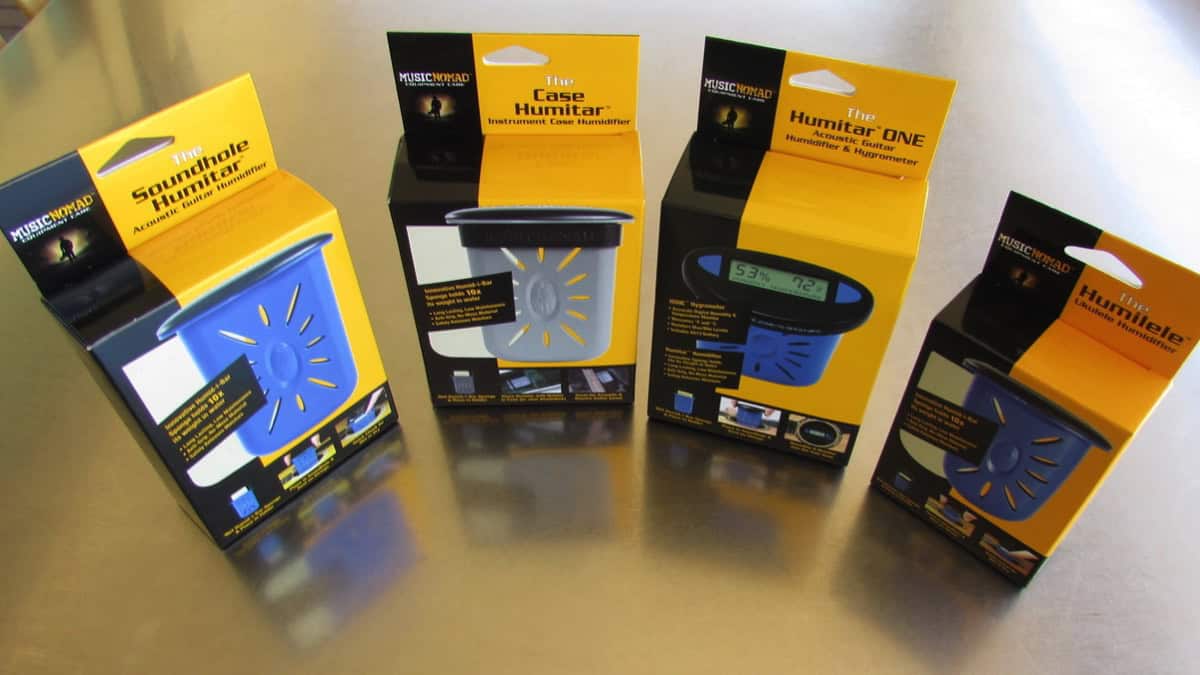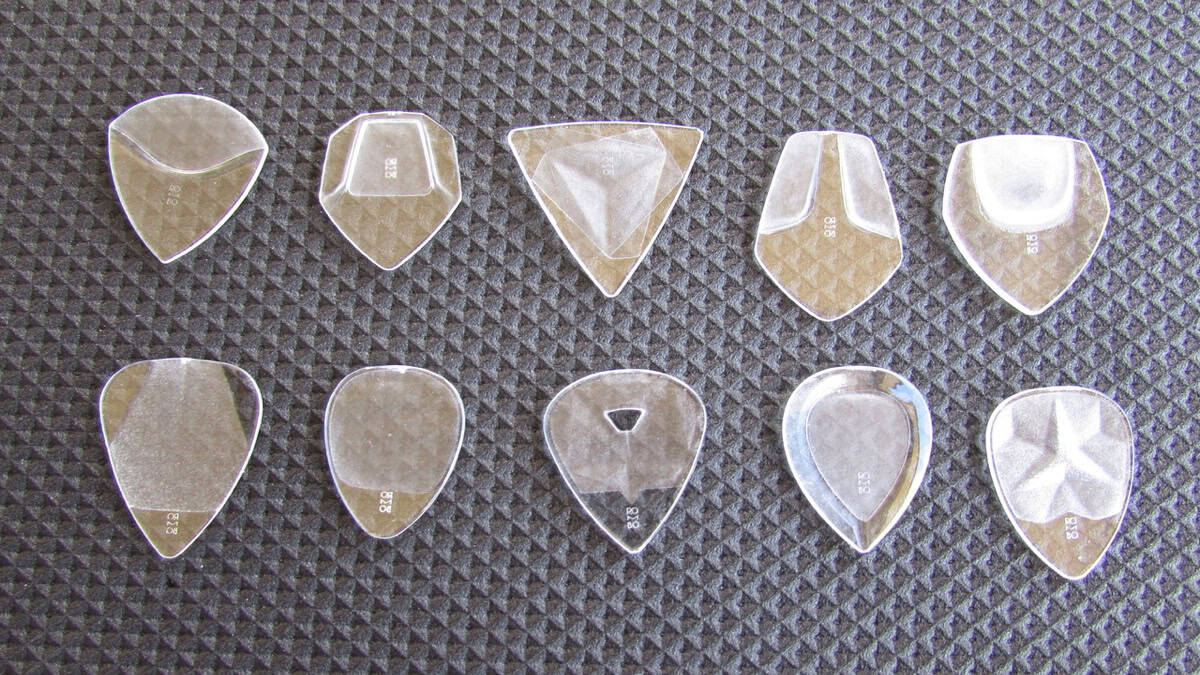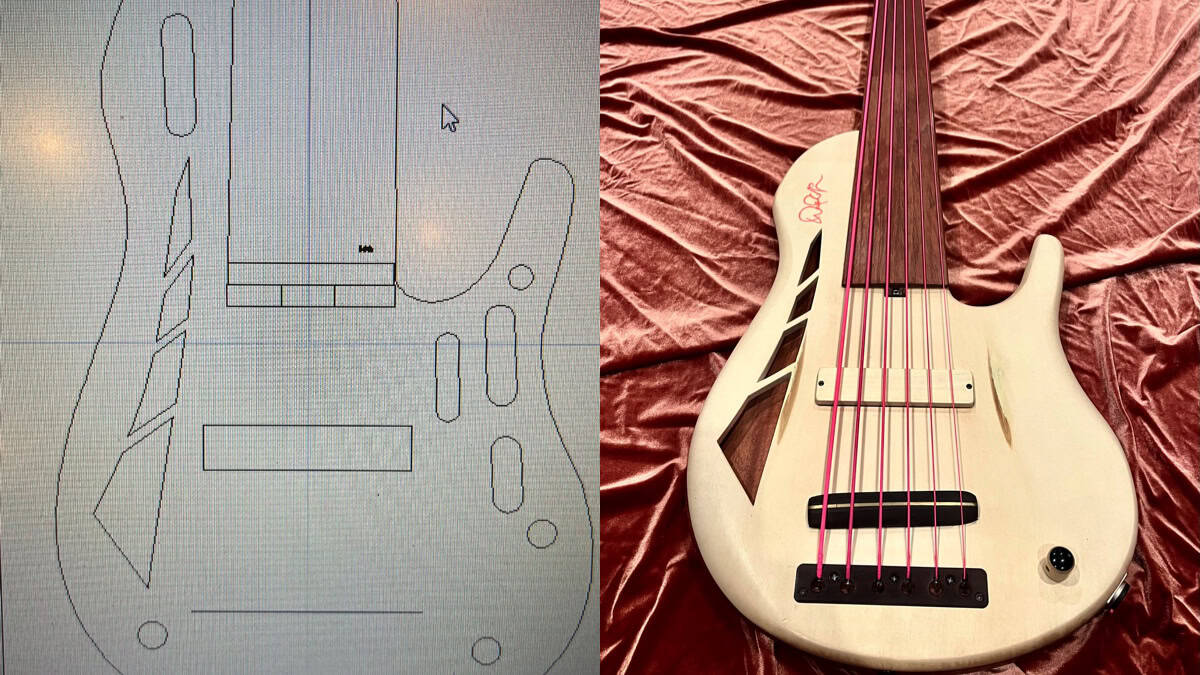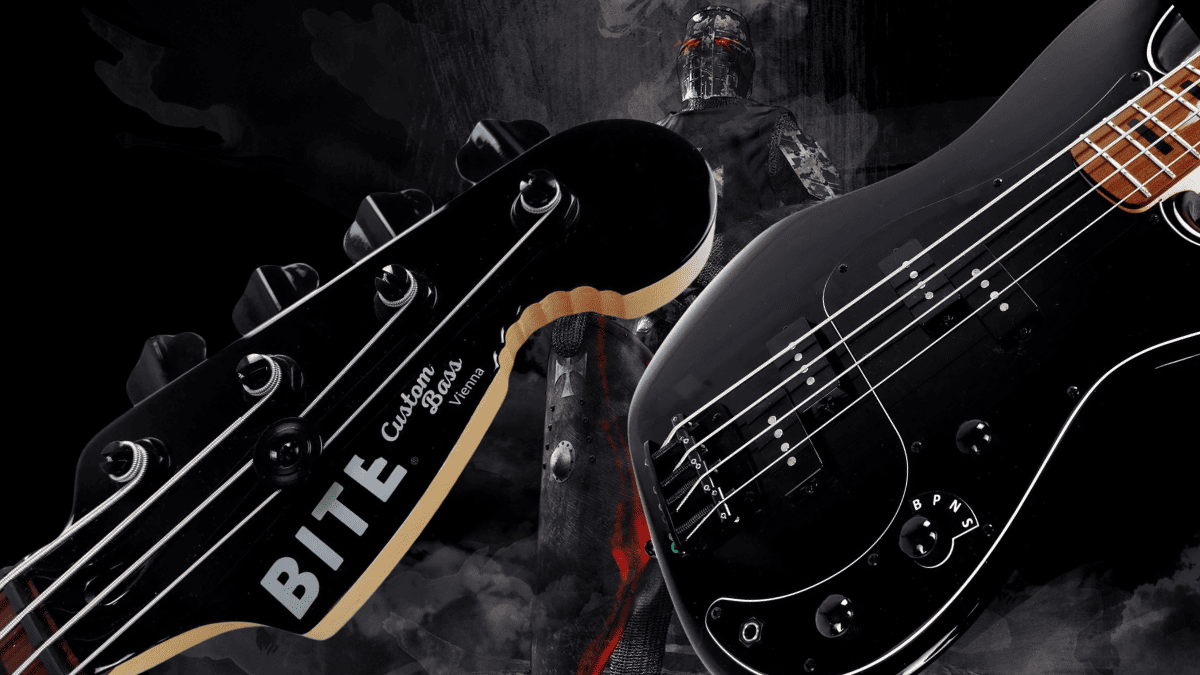Gear Reviews
Review: API LLX Bass TranZformer Bass Pedal

API LLX Bass TranZformer Bass Pedal…
Very few companies in the audio world have the history and pedigree to match API. Since 1969, their name has been synonymous with the highest level of pro audio gear, and their recording consoles and outboard gear sit prominently in the finest recording studios all over the world. The list of famous studios and notable users is too big to even begin to mention, but suffice to say, API gear is widely considered must-have engineering tools for some of the finest bands, record producers, and engineers on the planet.
In 2017, API launched the TranZformer series of guitar and bass pedals.
Their Bass TranZformer LX from that line continues to be a highwater mark for bass pedalboard preamp-ery. With a studio-quality compressor based on the venerable API 525, featuring a bass-optimized 3-band EQ, and incorporating a transformer-driven XLR DI output, the Bass TranZformer LX delivered on par with the brand’s lineage. The downside, if there was any, was a large size and external 18V 500mA power supply, making the LX not the most pedalboard-friendly offering out there.
This year, API reimagined the TranZformer series, releasing the TranZformer LLX Bass Pedal: an updated API bass preamp pedal that is smaller/more pedalboard sized, is isolated multi-power supply friendly (9-18v @100mA), and more affordable than its LX predecessor. The LLX ditches the compressor for a slew of bass-specific options, like a variable overdrive circuit, a high shelving/high pass switch for the treble EQ, and a 20dB output pad. The chassis, knob feel, and finish are nothing short of impeccable. The enclosure feels robust and high quality and there is just no hating those classic API knobs (off-the-chart vibes). Paint and graphics are also perfectly executed.
Looking under the hood, the heart of the LLX is API’s 2510 OpAmp and signature output transformer.
The LLX features a bass optimized 3 band EQ with center frequencies of 100Hz, 400Hz, and 2Khz. These are very well voiced to complement the classic API sound, which I will poorly describe as “quick and firm, slightly aggressive and crunchy but somehow still vintage-y/warm, and undeniably hi-fi”. Personally, I tend to gravitate towards lower bass and higher treble EQ points, but I have to admit that the LLX EQ just works beautifully for its design goal. In addition, the treble control includes a switch to select either shelving (everything at 2k and above) vs a peaking (at 2k, gently sloping off on both sides) style EQ. With my preferences toward higher treble EQ, I was able to get the “air” I like from upper treble boost with the shelving control, plus the addition of that vintage-y 2k sheen.
The LLX also includes a fabulous overdrive circuit, selectable via a mini toggle switch.
In overdrive mode, the gain knob adds distortion by overdriving the API 2510 input preamp stage. Everything from subtle creamy overdrive to full-blown distortion is easily dialed up with the LLX, and the unit’s EQ is great for shaping ones preferred drive quality.
This is a great time to mention the unit’s 20 dB output pad. Their literature states that this is useful if going into a bass amp input, but I also found it to be very useful for taming high output levels that resulted from high-gain overdrive settings. I found the output suitable for my amps front end in the 0dB setting, so I only used the input pad to bring my volume levels back to a reasonable output level when using saturated distortion sounds. Without a master volume output though, I did find myself a bit hamstrung due to the distortion level being tethered to the units output volume in either 0 or -20dB mode. A separate master output volume control might have fixed this issue and given a bit more flexibility in gain staging.
As for the sound quality of the LLX, it is fair to say that my expectations were high going in.
Having used API preamps in the studio for recording bass, I am very familiar with how great an API mic preamp or channel strip sounds. The LLX 100% captures the API sonic vibe, and really nails the classic sound I was expecting: Direct, fast, slightly aggressive but not edgy (let’s call it “assertive”), the LLX imparted a quickness and weight to my sound that made my basslines sit big and proud. With the EQ flat and the gain at 0 dB, there isn’t a whole lot of coloration, but bringing up the gain and engaging the EQ resulted in some lovely “modern vintage” bass tones. I was pleasantly impressed with how well the EQ points and slopes complement the tone of the unit overall and found my happy place with a little bit of boost in each band, and the treble in shelving mode. I’m not a huge distortion buff, but even I was super impressed with the usable range and flexibility of the overdrive mode.
If I could make any suggestions for how to make the LLX better?
Top mounted jacks: I am becoming more and more of a stickler for top mounted jacks these days, with all the pedalboard Tetris I find myself doing to fit pedals on my board. A soft click switch: Although, to be fair (and complementary), if ever there was an “always on” pedal, this could be it. It just sounds great and made all my basses sound rock solid. A master volume: As I mentioned above, a separate master volume would allow for distortion levels to be dialed in without the unit’s output level being tied to the gain knob. Again though, I never quite found myself up against the wall in that regard, with the 20dB pad, but it did come to mind. Lastly and knowing how great the API output transformers are, I wish It had an XLR DI output, however, the small size and affordability of the pedal undoubtedly speak to its streamlined componentry.
Overall, the API is a winner, it sounds great, looks sharp, and is wonderfully voiced in a way that those familiar with API will recognize as a wonderful branch of an illustrious family tree.
Whether using it as a bass preamp, a wonderfully flexible overdrive pedal, an EQ, or all of the above, the TranZformer LLX is sure to satisfy a wide range of players looking to up their tone game. The LLX retails for $295, and more info can be found on API’s website.
Bass Videos
String Instrument Humidifiers

String Instrument Humidifiers
After living in some very humid parts of the country for decades, we moved to a dryer, much sunnier location. As a result, I started noticing some fret sprout on my string instruments and recently did a video on fret sprout correction.
It occurred to me that I should take a more preventative approach to string instrument humidification. Of course, I turned to my instrument maintenance experts, Music Nomad Equipment Care, for a solution and they suggested their Humitar series. (Note: They sent two press samples and I purchased the remainder online.)
Join me as I look at these useful tools for keeping my string instruments in tip-top condition.
The Humitar series is available online at Music Nomad Equipment Care, as well as Amazon.com
Bass Videos
Review: CrystalBright Rombo Picks

CrystalBright Rombo Picks
PR SamplePlaying bass with a pick is still a touchy subject in our community. I believe you should be able to use whatever you need to get your sound. Even though I mostly play with my fingers, I like to check out innovative new picks that might have something new to offer, sonically speaking.
Judith and Carlos from Rombo recently contacted me about a new material called CrystalBright that they have been researching for the last 12 months and offered to send some prototype picks. After trying them out, I put together this video with my findings.
For more info check out @rombopicks
Gear
New Joe Dart Bass From Sterling By Music Man

Sterling by Music Man introduces the Joe Dart Artist Series Bass (“Joe Dart”), named after and designed in collaboration with the celebrated Vulfpeck bassist.
Above photo credit: JORDAN THIBEAUX
This highly-anticipated model marks the debut of the Dart bass in the Sterling by Music Man lineup, paying homage to the Ernie Ball Music Man original that all funk players know and love. The bass embodies many of the original model’s distinctive features, from its iconic minimalist design to the passive electronics.

The design process prioritized reliability, playability, and accessibility at the forefront. Constructed from the timeless Sterling body, the Dart features a slightly smaller neck profile, offering a clean tone within a comfortable package. The body is crafted from soft maple wood for clarity and warmth while the natural finish emphasizes the simple yet unique look.
Engineered for straightforward performance, this passive bass features a ceramic humbucking bridge pickup and a single ‘toaster’ knob for volume control. Reliable with a classic tone, it’s perfect for playing in the pocket. The Dart is strung with the all-new Ernie Ball Stainless Steel Flatwound Electric Bass Strings for the smoothest feel and a mellow sound.

The Sterling by Music Man Joe Dart Bass is a special “Timed Edition” release, exclusively available for order on the Sterling by Music Man website for just one month. Each bass is made to order, with the window closing on May 31st and shipping starting in November. A dedicated countdown timer will indicate the remaining time for purchase on the product page. Additionally, the back of the headstock will be marked with a “2024 Crop” stamp to commemorate the harvest year for this special, one-of-a-kind release.
The Joe Dart Bass is priced at $399.99 (MAP) and can be ordered globally at https://sterlingbymusicman.com/products/joe-dart.
To learn more about Joe Dart, visit the official Vulfpeck artist site here https://www.vulfpeck.com/.
Gear Reviews
The Frank Brocklehurst 6-String Fretless Bass Build

A few months ago, my Ken Bebensee 6-string fretted bass needed some TLC. You know, the one rocking those Pink Neon strings! I scoured my Connecticut neighborhood for a top-notch luthier and got pointed to Frank Brocklehurst, F Brock Music. He swung by my place, scooped up the bass, and boom, returned it the next day, good as new. Not only that, he showed up with a custom 5-string fretted bass that blew me away. I couldn’t resist asking if he could whip up a 6-string fretless for me.
Alright, let’s break down the process here. We’ve got our raw materials: Mahogany, Maple, and Holly. Fun fact – the Mahogany and Maple have been chilling in the wood vault for a solid 13 years. Frank is serious about his wood; they buy it, stash it away, and keep an eye on it to make sure it’s stable.

First up, they’re tackling the Mahogany. Frank glues it together, then lets it sit for a few days to let everything settle and the glue to fully dry. After that, it’s onto the thickness planer and sander to get it nice and flat for the CNC machine. The CNC machine’s the real star here – it’s gonna carve out the body chambers and volume control cavity like a pro.

While the Mahogany’s doing its thing, Frank goes onto the neck core. Three pieces of quartersawn maple are coming together for this bad boy. Quartersawn means the grain’s going vertical. He is also sneaking in some graphite rods under the fingerboard for stability and to avoid any dead spots. The truss rod is going to be two-way adjustable, and the CNC machine’s doing its magic to make sure everything’s just right.

Now, onto the design phase. Frank uses CAD software to plan out the body shape, neck pocket, chambering, and those cool f-holes. I had this idea for trapezoid F-holes, just to do something different. The CAD software also helps us map out the neck shape, graphite channels, and truss-rod channel with pinpoint accuracy.

Once everything’s planned out, it’s CNC time again. Frank cuts out the body outline, neck pocket, and the trapezoid F-holes. Then it’s a mix of hand sanding and power tools to get that neck just how we like it. Oh, and those f holes? We’re going for trapezoids of different sizes – gotta keep things interesting.

Next step: gluing that neck into the pocket with some old-school hide glue. It’s got great tonal transfer and can be taken apart later if needed. Then it’s onto hand-carving that neck-body transition.

For the custom-made bridge, Frank uses brass for definition and Ebony for tonal transfer and that warm, woody sound.

BTW, for tunes, Frank went with Hipshot Ultralights with a D Tuner on the low B. This way I can drop to a low A which is a wonderful tone particularly if you are doing any demolition around your house!
Now it’s time for the side dots. Typically, on most basses, these dots sit right in the middle of the frets. But with this bass, they’re placed around the 1st, 3rd, 5th, 7th, 9th, and 12th frets.

Frank’s got his pickup hookup. Since the pickup he was building wasn’t ready, he popped in a Nordstrand blade to give it a whirl.

It sounded good, but I was itching for that single-coil vibe! And speaking of pickups, Frank showed me the Holly cover he was cutting to match, along with all the pink wire – talk about attention to detail!

A couple of things, while it is important for me to go passive, it is equally important for me to just go with a volume knob. Tone knobs are really just low-pass filters and the less in the way of a pure sound for me, the better.
Finally, it’s string time! As usual, I went for the DR Pink Neon strings. Hey, I even have matching pink Cons…Both low tops and high!

Once we’ve got everything tuned up and settled, we’ll give it a day or two and then tweak that truss rod as needed. And voila, we’ve got ourselves a custom-made bass ready to rock and roll.

I want to thank Frank Brocklehurst for creating this 6 string beast for me.
Gear Reviews
Review Transcript: BITE Custom Bass – The Black Knight PP Bass

This is a written transcript of our video review of the BITE Custom Bass Black Knight PP Bass originally published on March 4, 2024
BITE Custom Bass – The Black Knight PP Bass Review…
Bass Musician Magazine did a review on a Steampunk bass from BITE Guitars about three years ago, it was an amazing instrument, and we were very impressed. Now we’re happy to bring you another BITE bass, the Black Knight PP.

Everybody needs a P-type bass, it’s the standard of bass. If you’re recording, they want you to have a P bass. So why not have something that gives you a little more by having two instead of one P pickup. That’s the idea of this bass, it’s the first thing that leaps out: the double P pickup configuration.

Installing two of their 1000 millivolt split-coil pickups, BITE then went one step further and wired them up in a 4-way parallel/series circuit, a look at the controls reveal a 4-way rotary selector:
The first position, marked “B”, gives you the bridge pickup by itself.
The second position, marked “P”, gives you the bridge and neck pickups in parallel mode, that’s the traditional J-type circuit, it reduces output due to the physical law of parallel circuits.
Position number 3 is marked “N”, it gives you the neck pickup by itself.
And finally, number 4, marked “S”, gives your bridge and neck in a series (humbucking) mode which adds up resistances and thus boosts output. The other two controls are master volume and master tone.

What’s more, like every BITE bass, this one also has a reinforced headstock heel designed to give it extra output and sustain. The BITE website features a graph and explanation of what they have done to the heel, as compared to traditional headstocks.

A look at the body reveals a beautiful Black Blast body finish and underneath that we have alder wood. The bass has a matching headstock with a 4-in-line tuner setup and the traditional bite out of it, so everybody will know what kind of bass you’re playing. The pickguard is 3-ply black, the neck is vintage tinted hard maple and it has a satin speed finish at the back which keeps your thumb from sticking.
On top of that, there’s a clear-coated roasted black locust fretboard with black blocks marking the frets. The nut is a black Graph Tec nut, we’ve got diamond dome control knobs, and the tuners are lightweight compacts with cloverleaf buttons and a 1:17 ratio precision gear. The bridge is a Gotoh brass bridge with 19-millimeter string spacing.
Overall measurements: we’ve got a standard 34″ scale, a 1.65″ width nut and a C neck profile. This bass weighs 8.2 pounds, or 3,7 kilograms for our metric friends, and it uses standard 18% nickel silver frets.
Taking a closer look at the sound, this bass is a joy to play. The BITE proprietary 1000 millivolt pickups deliver an extraordinary amount of output which is surprising considering this is a passive instrument. You may even want to set your amp to active mode because of all of the juice you’re getting out of this guy.
The tonal possibilities are very versatile, it’s a straight P if you want but also much more with those different arrangements of the circuitry. So why have multiple basses when you’ve got one that can give you your basic P plus a lot more?
To sum it up, the Black Knight PP is an amazing instrument. The attention to detail that BITE puts into their basses is second to none. This bass is also amazingly balanced and gorgeous to hold and feel with the satin neck finish.
For more information, visit online at bite.guitars/product/black-knight-pp












